How To Troubleshoot A Lawn Mower That Is Not Self Propelling
What happens if the wheels on your self-propelled lawn mower do not turn, or the mower will not move? It is not uncommon for the engine of a lawnmower to be running while the wheels remain still. You must be aware of how to address this issue if you own a mower.
First, collect all of the necessary tools and supplies, then examine the v-belt, transmission, cables, drive pulleys, and wheel assembly. After that, begin taking important measures to repair the components that are broken.
Continue reading this article to learn the troubleshooting techniques for a lawn mower not self-propelling.
What Causes a Lawn Mower Not Self-Propelling?
If the wheels on your lawnmower do not turn or self-propel, you must figure out the source of this major problem.
The traction control cable may be damaged or improperly adjusted. You should check your transmission, wheels, and drive cord for any damage or wear and tear because these components will most likely cause your mower not to self-propel.
These typical causes can help you quickly and simply remedy this problem, so you can get back to riding your mower as soon as possible.
6 Steps to Troubleshoot a lawn Mower Not Self-Propelling
This particular problem is one of the most prevalent concerns, and many individuals frequently experience it. If you browse numerous consumer forums and YouTube videos, you will find a variety of solutions.
However, not all solutions are dependable, and some are costly to use. Or, other methods may exacerbate the issue and cause further damage to your mower, which is an awful waste of time and money.
Thus, I have enumerated a simple do-it-yourself (DIY) solution to the problem, which is also completely free.
Things you will need to troubleshoot the lawn mower not self-propelling:
Look at the checklist of the required tools and materials for troubleshooting a lawn mower not self-propelling:
| Tools | Materials |
| 4-In-1 Screwdriver | Cables |
| Cable Adjuster | Belts |
| Half Inch Socket | Lubricate |
| Half Inch Wrench | |
| Safety Gloves & Goggles |
Step-1: Inspect The V-Belt
The V-belt moves the drive pulleys, which in turn drive the lawnmower wheels. The lawn mower wheels will not turn if the V-belt is damaged or worn out.
Make sure the V-belt is in good condition. Replace the V-belt if it is faulty.
V-belt replacement instructions are provided below.
- Changing the belt is generally a simple task.
- The first step is to tilt the mower over so that you can access the deck’s underside.
- Keep the carburetor face up to prevent fuel from leaking out of the mower. You must remove your blade in order to access the belt.
- To access the transmission belt, a second cover must be removed from the top of the mower’s deck or from the rear of the mower.
- In most cases, a belt guide must be removed or loosened before the belt may be accessible. Replace the belt by inserting it around the pulleys, then installing covers and blade, and finally tightening the belt using a cable adjuster.
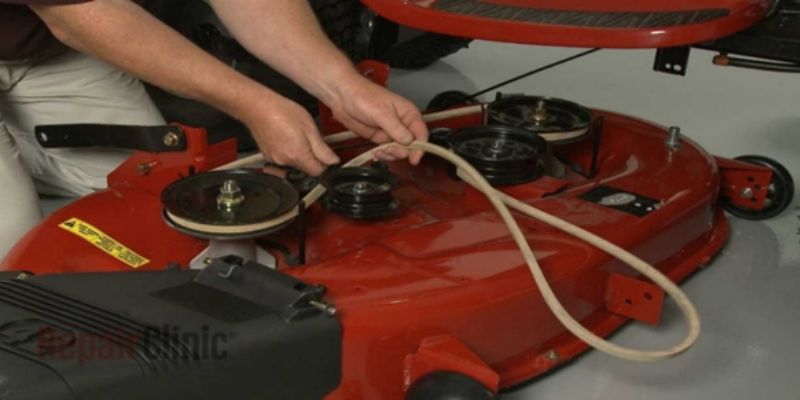
Step-2: Check the Drive Pulley
In this step, make sure the drive pulley is in good shape. The engine crankshaft is connected to the driving pulley. The transmission will not be able to contact the wheel assembly if the driving pulley is worn out or broken.
The driving pulley can be easily replaced if it becomes damaged or malfunctions.
To begin, take off the lawnmower’s cutting blades. If the belt has to be replaced, removing it from this position should be simple.

Check out this video for troubleshooting this particular issue.
Step-3: Repair Wheel Assembly
If your self-propelled lawnmower will not run, it’s most likely due to a problem with your lawnmower’s drive wheels. The transmission’s drive gear is engaged by a series of gears in the wheel assembly.
The transmission will not be able to engage the wheel assembly if the gears are worn out. Replace the wheel assembly if the gears are worn out.
To repair the wheel assembly, follow these procedures.
- The first step is removing the hub cab from the wheel, exposing the wheel nut.
- Afterward, unscrew the wheel nut, and the wheel will fall off of the drive shaft. After removing the wheel, spend a few minutes cleaning the transmission gear.
- Sliding the new wheel onto the drive shaft and aligning the driving gear with the wheel gear is all that is required to install a new wheel.
- Next, remove the hub cap and tighten the wheel nut.

Step-4: Check the Transmission
The crankshaft is connected to the transmission by a drive belt. The transmission and wheels turn when the drive belt is working properly. The gearbox will wear down more quickly in extreme conditions, such as steep hills or a particularly dusty atmosphere.
In order to check the transmission, keep an eye on it while the engine is running. The transmission is defective if the pulley spins, but the wheels do not.
- Detaching the drive belt and the drive wheels is the first step on both sides of the mower.
Note: The driving shafts feature a clutch that must be removed. There will be bearings or bushings where the mower’s deck passes through the driving shafts.
- The drive belt, the clutch assemblies, and the bearings or bushings should be thoroughly inspected when the old transmission is removed.
- Consider replacing any of these worn items. When the drive is already broken down, it’s far easier to fix these pieces than to wait for them to break down in the future.
- Replace the old transmission and all of the driving system components. It’s helpful to have a breakdown of your mower’s parts on hand while reassembling sections like the wheel clutches.
- Use this guide to ensure that each item is installed in the right order. Adjust the drive belt tension with the cable adjuster once the drive cable is reassembled.
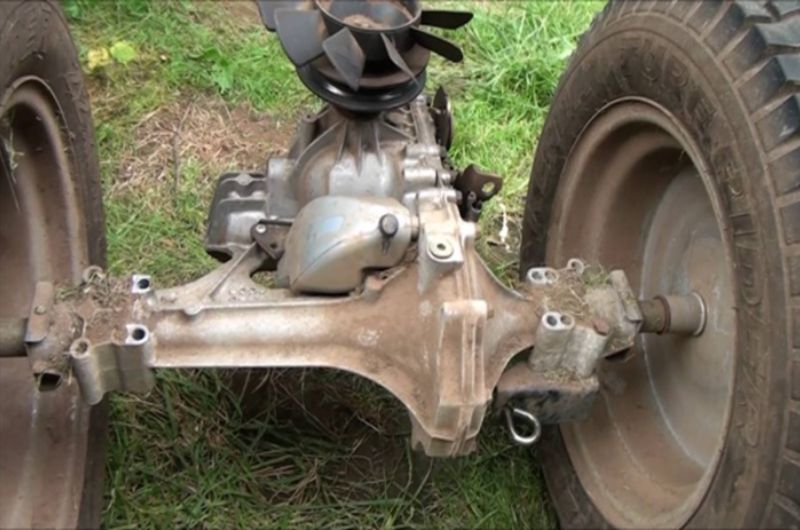
Step-5: Check the Self-Propel Cable
The driving cable links the drive shaft to the transmission. It engages the mower’s self-propel drive and changes its speed. A cast connection or metal hook joins the cable to the bail and transmission.
One end of the cable has an adjustment for the drive belt tension. Drive cables ultimately fail. It is important to check whether the control cord is loose.
Self-drive cable check:
- Check both cable connections for damage.
- Remove the connection from your mower’s drive bail.
- Cut cable ties and remove handle fasteners.
- Access the transmission cord. Usually done from below or by removing a back panel.
- Remove the transmission cable. Installing the new cable backward. Replace any severed cable ties, so the cable does not grab on plants or trees.
- Adjust the drive belt tension using the cable’s adjuster.
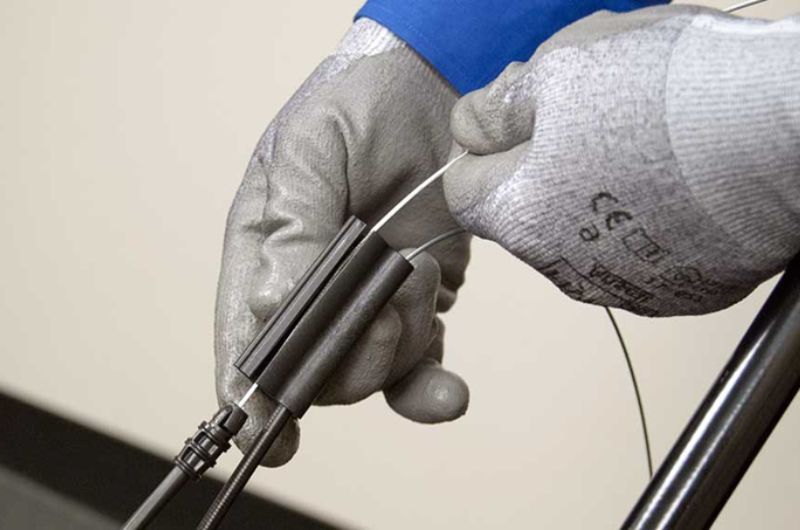
Step-6: Check for Traction Control Cable
Possible causes include a damaged or misplaced traction control cable. It must be checked to determine if the traction control cable is free to move.
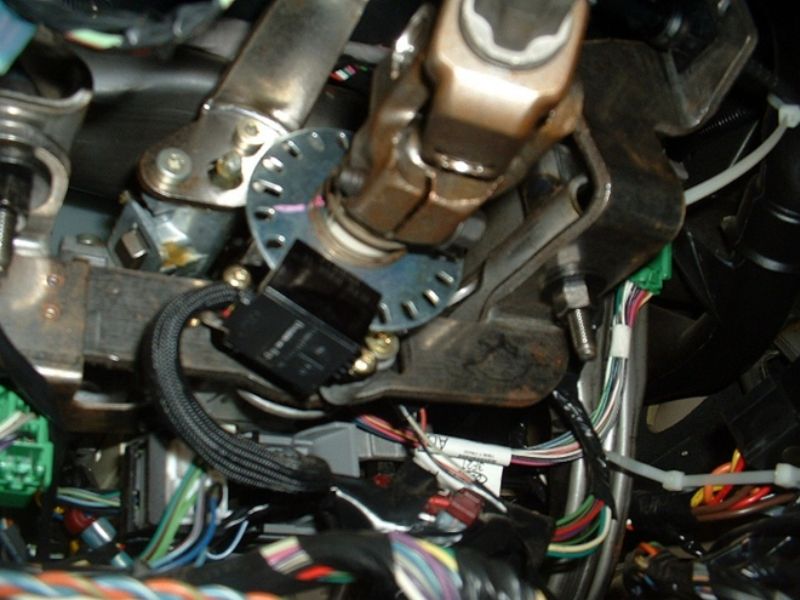
A tiny bit of oil squirted into the cable’s end may help lubricate it if it is not moving easily. If lubricating the traction control cable does not work, you should buy a new cable.
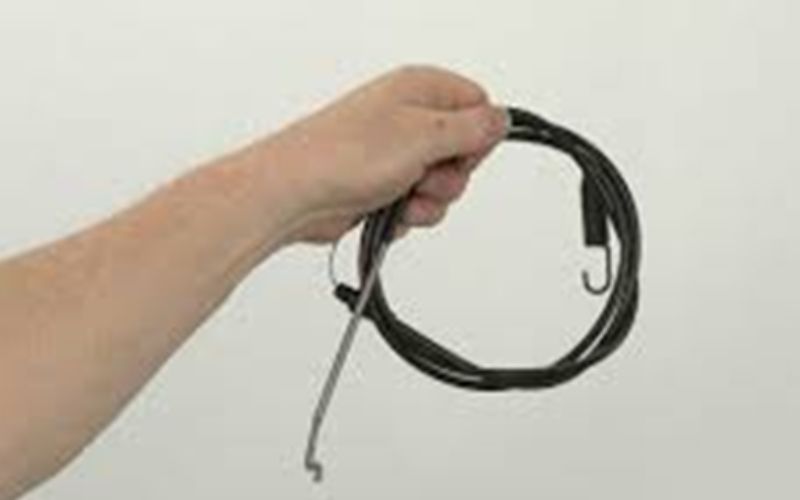
Follow this video for troubleshooting this issue-
Warning:
Before operating, maintaining, or repairing your lawn mower, always read the lawn mower’s instructions manual provided by the manufacturer. Before beginning a comprehensive check, shut down the engine and unhook all the power supplies.
Watch this video.
Frequently Asked Questions
Final Verdict
After explaining all the steps to troubleshoot a lawn mower not self-propelling, you can easily get your lawn mower back in the running state within no time.
In addition, you may learn more about these concerns by reading what experts have to say about them.
Regular mower maintenance can also assist in extending the life of the machine. I hope this information helped you address your problem.
Related Posts:
